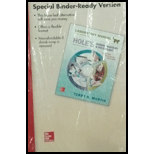
Concept explainers
To determine:
How are connective tissues associated with skeletal muscles?
Introduction:
Connective tissue is a type of animal tissue that helps in supporting, connecting and surrounding organs and other body parts. It consists mainly of collagen, elastic fibers, fatty tissues and bone or cartilage. It provides structural support to the tissues and organs of the body. These cells are derived from mesenchymal cells.
Skeletal muscles are also known as striated muscle tissues. They are voluntary muscles, so they move as per a person’s choice. They are under control of the somatic nervous system. These muscles are attached with bones by collagen fibers and tendons.
Explanation of Solution
Connective tissue is a type of tissue that provides the structural support to other tissues and organs of the body. Skeletal muscle is a voluntary muscle and it is in control of the somatic nervous system. It is made up of numerous muscles arranged in three layers of connective surrounding muscle fibers.
Skeletal muscles bind with connective tissues so that they can communicate with nerve cells and blood vessels. Connective tissue provides structure and strength to muscles. They are also known as striated muscle tissue. They are voluntary muscles controlled by the somatic nervous system; hence, move as per a person’s choice. These muscles are attached with bones by collagen fibers and tendons.
Skeletal muscle is made up of numerous muscles known as muscle fibers. Muscle fiber is formed with three layers of connective tissue. Connective tissue provides strength and structure to muscles.
Want to see more full solutions like this?
Chapter 9 Solutions
Loose Leaf Version Of Lab Manual For Hole's Human Anatomy & Physiology, Cat Version
 Human Anatomy & Physiology (11th Edition)BiologyISBN:9780134580999Author:Elaine N. Marieb, Katja N. HoehnPublisher:PEARSON
Human Anatomy & Physiology (11th Edition)BiologyISBN:9780134580999Author:Elaine N. Marieb, Katja N. HoehnPublisher:PEARSON Biology 2eBiologyISBN:9781947172517Author:Matthew Douglas, Jung Choi, Mary Ann ClarkPublisher:OpenStax
Biology 2eBiologyISBN:9781947172517Author:Matthew Douglas, Jung Choi, Mary Ann ClarkPublisher:OpenStax Anatomy & PhysiologyBiologyISBN:9781259398629Author:McKinley, Michael P., O'loughlin, Valerie Dean, Bidle, Theresa StouterPublisher:Mcgraw Hill Education,
Anatomy & PhysiologyBiologyISBN:9781259398629Author:McKinley, Michael P., O'loughlin, Valerie Dean, Bidle, Theresa StouterPublisher:Mcgraw Hill Education, Molecular Biology of the Cell (Sixth Edition)BiologyISBN:9780815344322Author:Bruce Alberts, Alexander D. Johnson, Julian Lewis, David Morgan, Martin Raff, Keith Roberts, Peter WalterPublisher:W. W. Norton & Company
Molecular Biology of the Cell (Sixth Edition)BiologyISBN:9780815344322Author:Bruce Alberts, Alexander D. Johnson, Julian Lewis, David Morgan, Martin Raff, Keith Roberts, Peter WalterPublisher:W. W. Norton & Company Laboratory Manual For Human Anatomy & PhysiologyBiologyISBN:9781260159363Author:Martin, Terry R., Prentice-craver, CynthiaPublisher:McGraw-Hill Publishing Co.
Laboratory Manual For Human Anatomy & PhysiologyBiologyISBN:9781260159363Author:Martin, Terry R., Prentice-craver, CynthiaPublisher:McGraw-Hill Publishing Co. Inquiry Into Life (16th Edition)BiologyISBN:9781260231700Author:Sylvia S. Mader, Michael WindelspechtPublisher:McGraw Hill Education
Inquiry Into Life (16th Edition)BiologyISBN:9781260231700Author:Sylvia S. Mader, Michael WindelspechtPublisher:McGraw Hill Education





